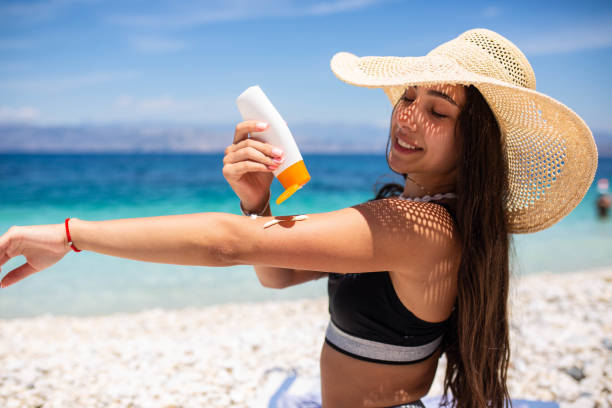The desire to have a sun-kissed glow has been around for decades. In the past, people would spend hours under the sun to achieve the perfect tan.
A natural tan refers to the darkening of the skin that occurs when it is exposed to the sun’s UV rays. When UV rays penetrate the skin, they stimulate the production of melanin, a pigment that gives skin its color. Melanin production increases in response to sun exposure, resulting in a darker skin tone.
An artificial tan, on the other hand, is achieved through the use of cosmetic products or equipment rather than exposure to the sun. There are several methods for getting an artificial tan, such as:
Self-tanning products. Lotions, sprays, or mousse that contain dihydroxyacetone (DHA), a chemical that reacts with the amino acids in the top layer of the skin to produce a tan-like effect.
Spray tanning. Applying a mist of self-tanning solution to the skin using a spray gun. The solution typically contains DHA and other ingredients that create a natural-looking tan.
Tanning beds. These specialized beds are equipped with bulbs that emit UV radiation similar to the sun. However, the UV radiation from tanning beds is more intense than natural sunlight, and it can increase the risk of skin damage.
Airbrush tanning. Applying a spray tan solution to the skin using an airbrush gun to match the client’s skin tone, and the application can be more precise than spray tanning.
Artificial tans are often used as an alternative to natural tans because they offer a more convenient and safer way to achieve a tan without the risks associated with sun exposure. However, it’s important to use caution when using artificial tanning methods, as they can still pose risks such as skin irritation or allergic reactions.
Natural Tan Pros and Cons
Pros
- Sun exposure is the best way for your body to produce vitamin D, a nutrient that is essential for strong bones and a healthy immune system.
- Sun exposure can also improve your mood and help reduce stress.
- Getting a natural tan is free and requires no additional expenses.
Cons
- Prolonged exposure to the sun can cause skin damage, including wrinkles, fine lines, and age spots. It can also increase your risk of skin cancer.
- You may end up with an uneven tan, with some areas darker than others.
- It can take several hours of sun exposure to achieve a noticeable tan.
Artificial Tan Pros and Cons
Pros
- You can get an artificial tan quickly and easily without having to spend hours in the sun.
- Unlike natural tans, artificial tans can be applied evenly, ensuring that you have a uniform, golden glow.
- You can choose the shade and intensity of your tan, giving you complete control over your look.
Cons
- Some artificial tanning methods, such as tanning beds, can increase your risk of skin damage and even skin cancer.
- Artificial tans tend to fade quickly and may require frequent touch-ups to maintain the desired look.
- Getting an artificial tan can be expensive, especially if you opt for professional tanning services.
Here are some tips on how to stay safe when getting a tan
- Use sunscreen. Choose a broad-spectrum sunscreen that has an SPF of at least 30. Apply it 15 minutes before you go out in the sun and reapply it every two hours, especially if you are swimming or sweating.
- Avoid peak sun hours. The sun’s rays are strongest between 10 am and 4 pm. Try to avoid being outside during these hours, or if you have to be out, seek shade.
- Wear protective clothing. Go for long-sleeved shirts and pants, when you are outside. Hats and sunglasses can also help protect your face and eyes.
- Gradually build up your tan. Don’t try to get a deep tan all at once to avoid sunburn.
- Hydrate. Drink plenty of water as dehydration can make you more susceptible to sunburn.
If you want to get an artificial tan, check out Beach Bum Tanning for various options and packages. Check out this woman’s fake tan routine:
